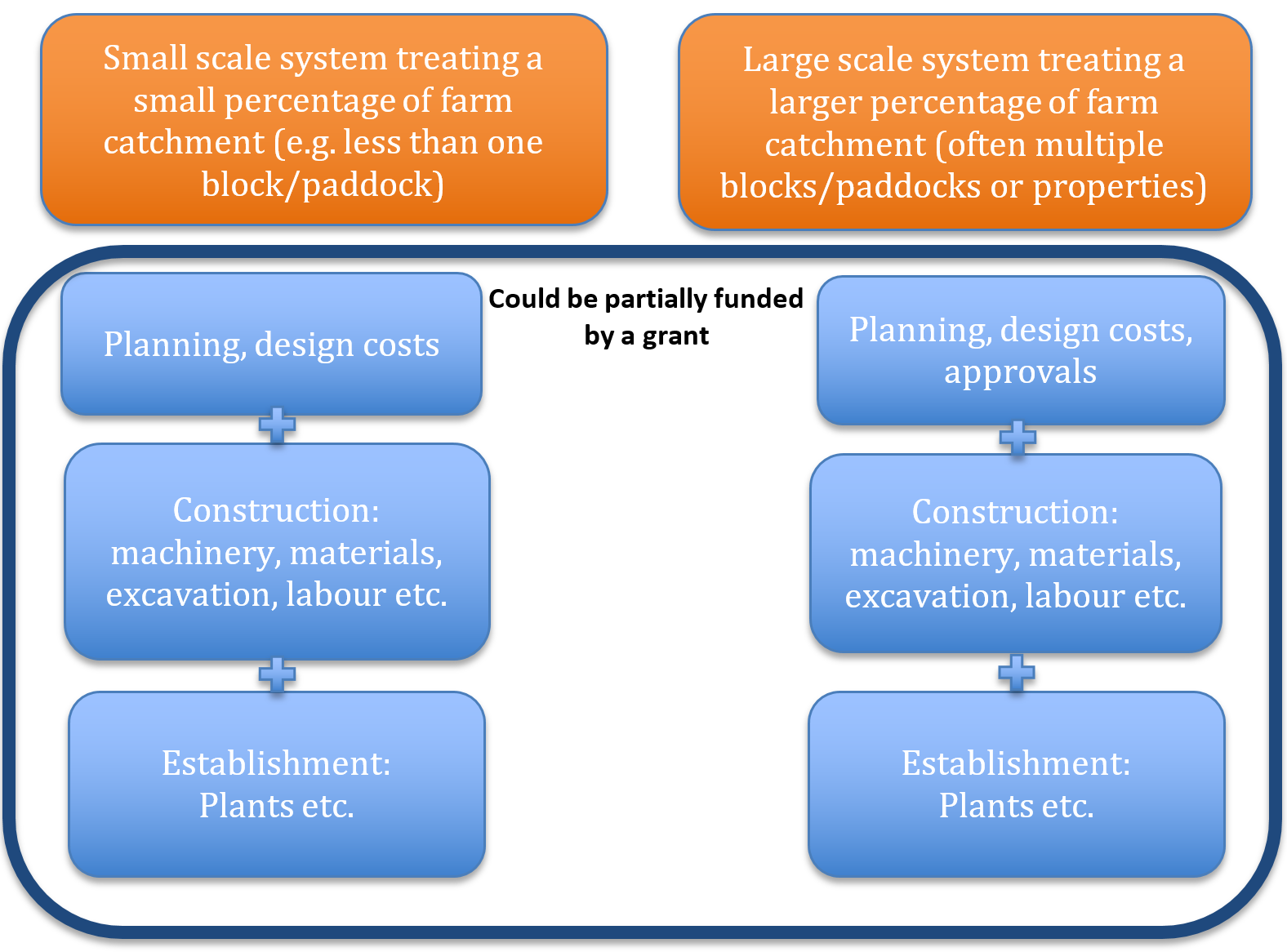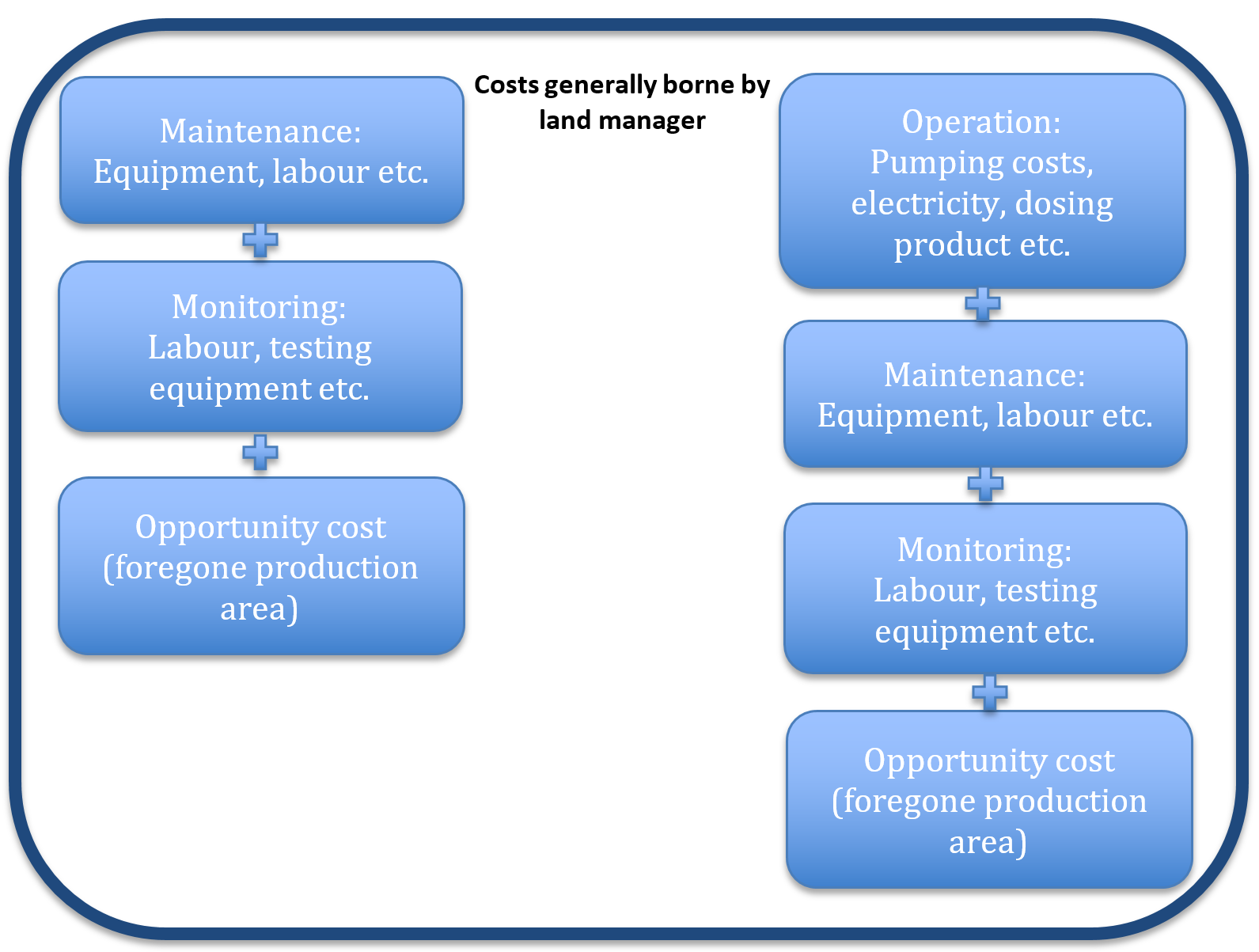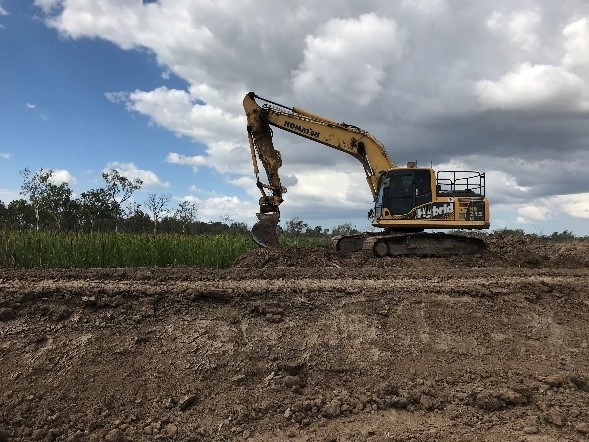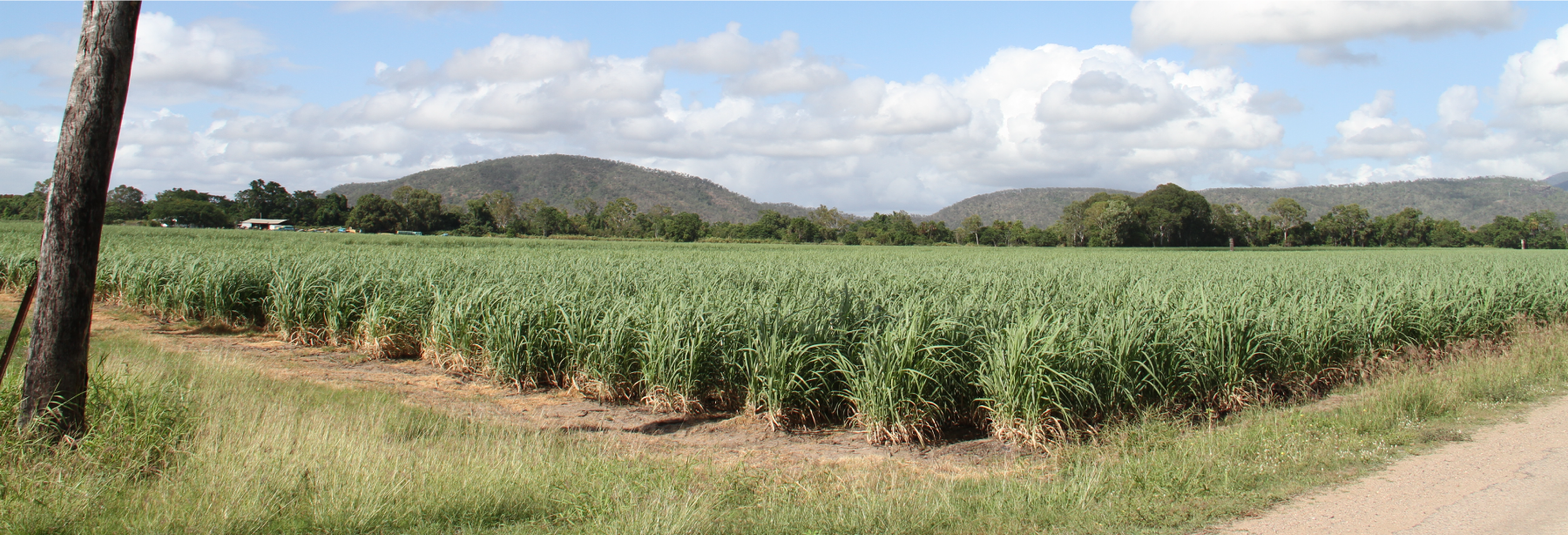|
|
Cost considerations (treatment systems)Cost is an important factor when identifying suitable treatment systems or a treatment train for a particular site. It is critical to assess the full range of potential costs prior to the detailed design phase of the project. Scale, efficiency and cost are all important considerations when planning treatment systems or treatment trains in agricultural production systems. Quick facts
The effectiveness of a treatment system or treatment train depends on its ability to intercept water from an agricultural production area and the subsequent level of removal of target pollutants. Each type of treatment system varies in terms of its capacity to intercept water (scale of treatment), efficiency in removing specific pollutants and in its costs. The costs involved in designing, constructing, operating and maintaining a treatment system and any opportunity cost (i.e. foregone agricultural production from the site) need to be considered early in the planning process, as this can determine the feasibility of a treatment system. Treatment systems often incur a mixture of upfront costs (e.g. design and construction) and on-going costs (e.g. maintenance) that arise over the project lifetime. All costs arising in the future should be estimated and valued upfront (i.e. discounted to present value) and added to one-off up-front costs to produce the total cost (called total present value cost) for the project as a whole[1].
Key considerationsCost of treatment system
Treatment performance
Co-benefits
On-farm or regional scaleThe scale of the treatment system (i.e. the catchment area treated) is an important consideration when determining cost-effectiveness. Some systems will be relatively cheap and effective at removing certain pollutants but will only treat surface runoff or groundwater from a small catchment area on a farm (e.g. only part of a paddock or block). These types of systems are often located immediately adjacent to the production footprint (e.g. edge of field) and have minimal operating requirements and hence fewer ongoing costs. In some situations, it could be cheaper or easier to construct a single large treatment system (i.e. treating run-off from multiple blocks/paddocks or properties) than multiple smaller systems[7]. A large or regional scale treatment system may be capable of delivering reductions of multiple pollutants, with the costs potentially able to be spread across multiple landowners or regional authorities. The figure below shows key considerations when assessing the upfront (upper box) and on-going (lower box) costs of small scale (left side) and large scale (right side) treatment systems.
  Cost-effectivenessCost-effectiveness of treatment systems can be calculated through a number of different mechanisms which consider the costs involved and the physical quantities of target pollutants removed. A single treatment system can be designed to deliver reductions for a single pollutant (e.g. dissolved inorganic nitrogen), however, it is also possible for a treatment system to deliver reductions of several pollutants (e.g. dissolved inorganic nitrogen and phosphorus). Calculating the cost-effectiveness of the former type of treatment system is more straightforward compared to the latter. For example, if it can be determined that a particular treatment system is designed to remove a specified amount of dissolved inorganic nitrogen (DIN), then the cost-effectiveness is expressed as $/kg DIN removed. If a single treatment system delivers reductions of multiple pollutants, then the calculation and presentation of cost-effectiveness becomes more complex. A methodology for calculating the cost-effectiveness when bundles of pollution reductions are delivered from a single project has recently been proposed[6]. Treatment wetlands and bioreactors with relatively high influent nitrogen concentrations are more cost-effective at removing nitrogen[3][4]. Therefore, it can be expensive to treat water with very low pollutant concentrations and other options should be considered such as best management practices or wetland restoration. Calculation of cost-effectivenessThere are three commonly used methods for calculating and reporting cost-effectiveness of treatment systems:
In methods 1 and 2 it may be necessary to discount the annual removal rates if removal rates are expected to vary through time (e.g. as performance of a bioreactor decreases[3]). The calculation of these measures of cost-effectiveness requires adequate upfront cost data (including in-kind costs, e.g landholder labour or machinery use) and actual or estimated operational and maintenance costs[4]. Method 1 above has advantages in that it can be used to compare widely different treatment system types over varying timeframes. However, consistent cost data is needed to ensure meaningful and comparable results. Also, projects implemented in different years will need to have costs adjusted using an inflation index[4] Some hydrological modelling packages include a life cycle costing tool that can be used to assess and compare different treatment options at the start of a project (an individual device or a treatment train). The discount rate and inflation rate in the model can be modified to reflect the given project and the timeframe of analysis set. Similarly, default costs for planting, earthworks and establishment costs should always be checked and refined to ensure that they are reflective of local costs that will apply to a project. DisclaimerIn addition to the standard disclaimer located at the bottom of the page, please note the content presented is based on published knowledge of treatment systems. Many of the treatment systems described have not been trialled in different regions or land uses in Queensland. The information will be updated as new trials are conducted and monitored. If you have any additional information on treatment systems or suggestions for additional technologies please contact us using the feedback link at the bottom of this page. References
Last updated: 28 June 2022 This page should be cited as: Department of Environment, Science and Innovation, Queensland (2022) Cost considerations (treatment systems), WetlandInfo website, accessed 18 March 2024. Available at: https://wetlandinfo.des.qld.gov.au/wetlands/management/treatment-systems/for-agriculture/cost-considerations/ |

 — Department of Environment, Science and Innovation
— Department of Environment, Science and Innovation



